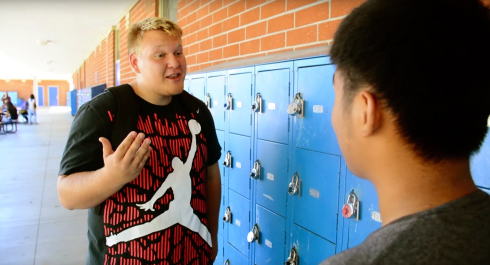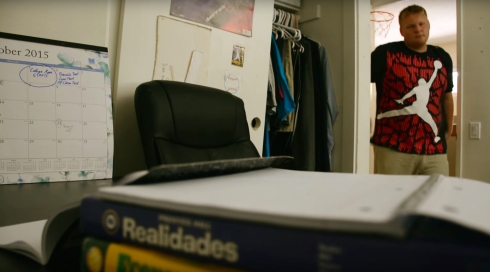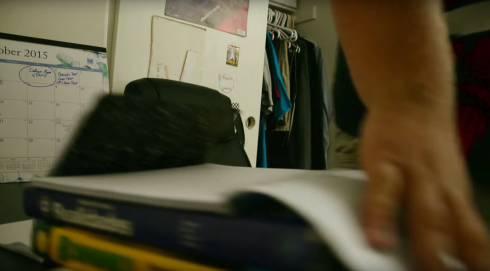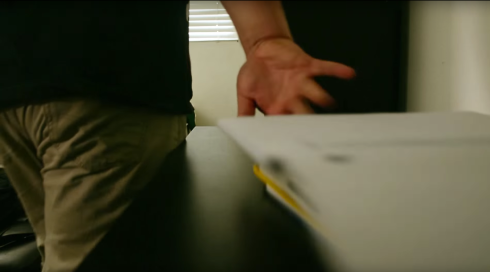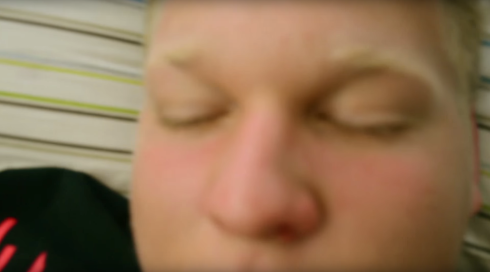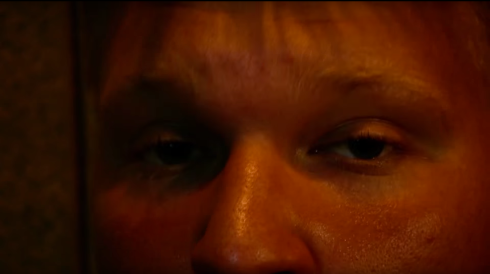Written by: Corey Nguyen
Hey there! My name’s Corey and I’d like to take you through the very popular “Shia Leboeuf” video I made and the general structure of how videos are made in BBN!
Let’s begin where every video starts : Pre-Production.
(If you haven’t seen the video or want to re-watch it, you can click here)
Pre-Production
In BBN, every video we do starts in what we call “Pre-Production.” This is where the idea for a video, or package, is created and planned out which happens in two stages. In the first stage, groups of two or three BBN members come up with an idea and pitch it in a “production meeting.” In these meetings, the group receives feedback from the executive producers and the other members after presenting their idea in front of the whole class. From there, the idea is either green lighted or rejected in lieu for another one and the group moves on to the next stage of pre-production.
Now for my video, I knew I had wanted to do something with Shia Leboeuf since I first saw the meme. Seeing how popular it had become and that it was starting to die, I thought it was a perfect time to bring it back. My first idea was to base it on a student that was too scared to ask another to homecoming, but with the episode airing two days before homecoming (long after tickets sales ended) one of the producers, Leah Phillips, after hearing my idea threatened to kick me out of BBN kindly suggested to change the theme. And so I based it on a student who procrastinated too much. I pitched the idea to the class and after some intense debate constructive discussion with the producers; the idea was green lighted.
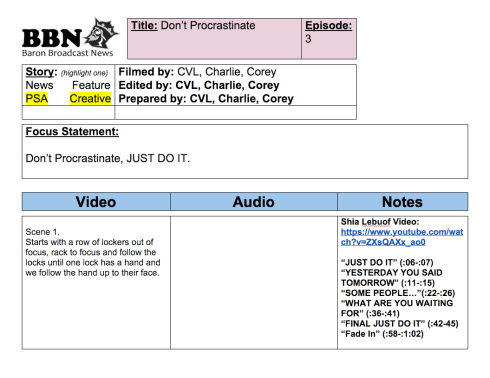
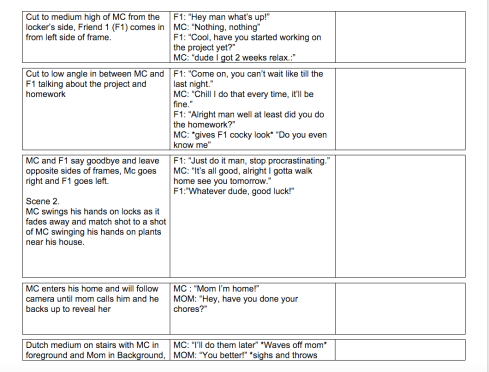
The second stage of Pre-Production is called the “planner check”. After getting their idea green lighted, groups must make a planner or “shot list” that the producers will go over. If the production meeting defined “what” the video would be about, the planner check is “how” the video would be made. The planner needs to cover all the aspects of the video, interview times if needed, shots and angles, music and audio, dialogue, actor or interviewee contact info, and has to have a detailed schedule of what days the group will film and edit. All videos are due two weeks after the production meeting. If the producers are happy with a group’s planner they green light it and the group is now free to precede. Pre-Production is now over.
The planner I made for Shia Leboeuf was and still is the most detailed planner I’ve ever made for BBN. There is a lot of competition in BBN for creative video slots as of course not every video can be creative. The better the planner, the more likely the producers will give the slot. And so I made my planner excruciatingly detailed because I really wanted this video in the episode. The producers liked it and I was now free to start filming which takes us to the next stage of a BBN video: Production.
Production
The idea is good. Actors have been contacted. The planner is passed. Time to film. Production is the collective effort of the group members to actually create the video. What kind of production the video is depends on the subject and purpose of it. Common packages for episodes are regularly scheduled, and are filmed with just our usual set up of a DSLR (Canon 60D/ Nikon D5200) , shotgun microphone/lavalier mic, and a tripod/monopod. However, something like “The Haunt” gets planned way in advance and may use more complicated or additional gear like sliders, matte boxes, etc. But really, the production value of a video depends on the group’s specific skills, knowledge, desire, and what the story calls for. This stage is usually the hardest part for most groups since this is where most mistakes/emergencies happen like an actor quitting, batteries dying, incorrect framing, among many others.
Warning: super long paragraph ahead. Production for Shia Leboeuf was in a word….insane. I had set up our film and editing days. They were the best laid plans. But plans almost always fail. Many times we had our actors, John Oliver and Johnathon Tran, cancel on us because they couldn’t meet on the same day.
But eventually, after delaying things a lot, we finally were able to film. I’m going to break it down by scene:
Scene I – Where John Oliver talks to Johnathon Tran about the project
Scene II- When John goes home and takes a nap
Scene III- The Nightmare Shia Leboeuf Scene
Scene IV- Waking up and Ending
Production: Scene I
So believe it or not, this scene was actually the hardest to film. Not because of any technical difficulty, but because we had to convey several important concepts in one set of dialogue: A) Who our main character is. B) That he’s super lazy. C) He refuses to accept his responsibilities even at the advice of others.
We re-filmed this scene many, many times. The dialogue had to be perfect and the acting just believable enough to convey what we needed to in addition to our first take being way too long. We start with a slider shot to our main character, followed by a over the top intro to our friend and then transition to standard over the shoulder A/B switches in the conversation.
Information about a character or “characterization” that is backstory/prelude to the actual story is called “exposition”. That’s what this scene was. Exposition. It sets up our main character and who he is and the problems of his life.
Production : Scene II
This scene was our seg-way into the nightmare sequence. We wanted to further push that our main character really was a lazy, apathetic guy. I wanted to make him a bit relatable and so on the calendar I wanted tests (because everyone has tests coming up) and college apps (because all the seniors know its the beginning of college app season). But I didn’t want him to be too relatable to the point where the audience would cheer FOR him, instead I wanted him to be a symbol of what they SHOULDN’T be. Everyone has been this guy at some point in their life and so this video’s purpose was to convince people to never be him again.
This scene featured two technically difficult shots that are both match transitions. The first was matching the sliding books as the main character goes to bed. There really isn’t a set technique to do this; the process is just do the action from both angles and match it the best you can in the edit room.
However, for the second match transition its a bit more complicated because its a transition into a different environment. We used the grid lines on the camera to match where John’s head would be and cut when they lined up.
Production : Scene III
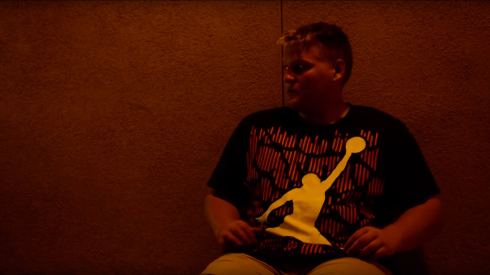
This is what you were probably waiting for: the Shia Chase scene. The dramatic build up, a trapped main character, and the final reveal; you can pretty much feel the climax of the video come to fruition.
As the final scene before revealing Shia, we wanted the video to go all out on the creepy, scary vibe. The tangy, orange school lights provided perfect lighting for a chase scene that would trap our main character.
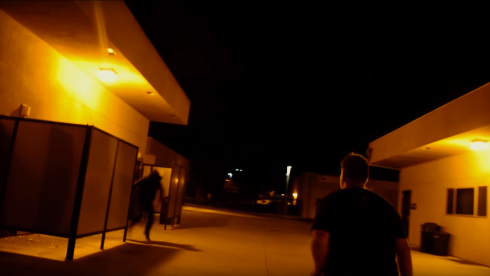
Weeks before, I had planned the geometry of the chase to be as simple, but as scary as possible. There’s not many places to trap someone at the school, and hallways were already a cliche location since we used it in past Haunts. So I used the space outside the choir room and would utilize the classic “impossible jump out” scenario to trap our main character into the vending machine hallway.
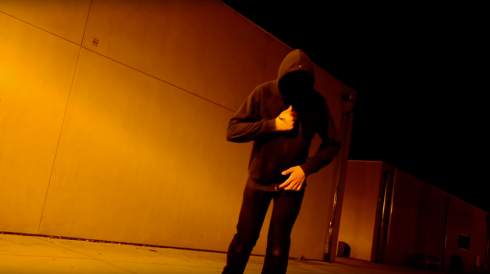
Arriving at the school at 6PM, the shoot lasted until almost 11PM. We utilized a number of lights for our main character’s close up, but for the rest of the scene relied on the school’s ambient night lights. Chris Van Lieshout was the only one of us with the stature and height to actually look imposing so we had him dress up as the “cloaked” figure with a black VFX mask to hide his hair. Filming John Oliver running away was fairly simple and just relied on timing Chris’s jump outs at John.
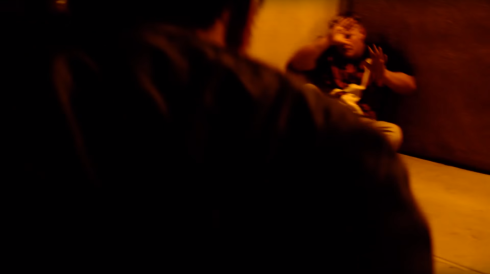
Then for the close ups during the final sequence, I actually took over because Chris was too tall for any of us to get over the shoulder shots. From there we recorded John’s reaction as the camera got closer, and then a “clean plate”, an empty spot for Shia Leboeuf to be put in and it was a wrap.
Production : Scene IV
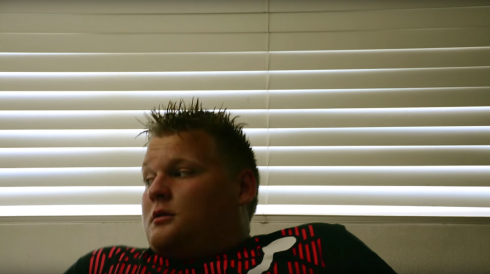
After all that, finally we reach the end of production. This sequence was actually not filmed in order. I filmed both Scene II and VI the day before Scene III in order to save time and effort.
What’s really funny is that the mom coming in was part of another scene that was deleted from the final video because it was too long. In the deleted scene, the main character is confronted by his mom who yells at him for not having done his chores yet.
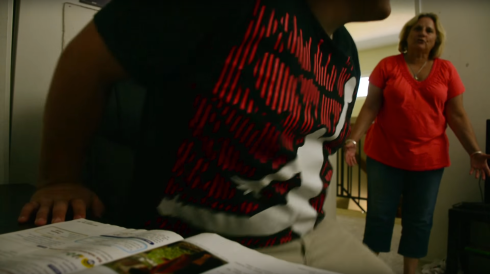
So with the final ending, we wanted our main character to learn his lesson and finally do the things he needed to do. Even though we cut out that extra scene; the mom coming in still made sense in the story.
Though I didn’t feel like it was quite enough. It needed something else. Something to fully sell the ghostly lore imagery I was seeking. And so I just added in a paler, transparent Shia Leboeuf doing his signature move to add that last strawberry on the cake as one last laugh for the audience.
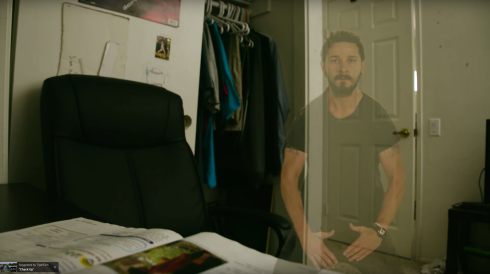
Post Production
Post-Production is defined as the process of putting the video together. From editing to color to visual effects; everything after filming is post production and the amount of post production depends on the video. Some videos just need editing and they’re done while others are multi-day massive projects that require all kinds of touch ups and compositions.
This was one of those videos.
Post Production : Editing
When it comes to editing, BBN runs on a completely Adobe workflow. Everything we use is in the Adobe Creative Cloud meaning Premiere Pro is our main editing software.
That’s what I used to edit the rough, mid, and final cuts of the video. The first cut of the video was 4 minutes long…..a usual video is 2 minutes so you could imagine how the producers would laugh me out of BBN if I showed them a 4 minute video. The second cut brought it down to 2:15, but that was still way too long so I had a solution: interrupt the intro.
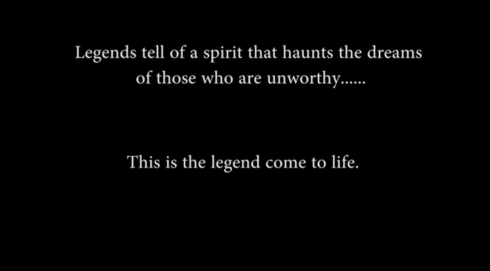
Now I’d like to say that interrupting the intro was a purely stylistic choice to hype the episode and freshen things up since we had the same intro as the past few. But to be completely honest, interrupting the intro gave me video a reason to be so long. I was essentially saving my own butt. (Sorry producers if you’re reading this after the fact.)
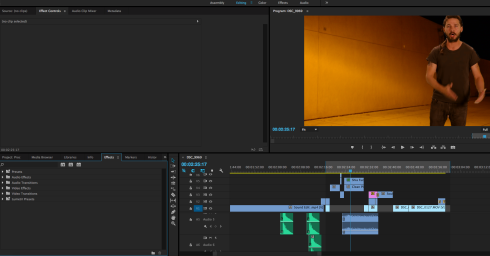
For Post-Production, the most complex part of the process was to green screen out Shia to place him into the shot. For that, I entrusted the job to BBN’s main VFX man, Chris Van Lieshout, who I also wrote about here.
The other problem we ran into was sound design. Making the shift this year to attributed music, copyrighted soundtracks were out of the option. So instead I used Chris’s massive list of sounds and noises to create the horror soundtrack by hand, I’ve placed it down below. Each green bar is a different sound effect, and placed together creates the full soundtrack you hear in the final project.
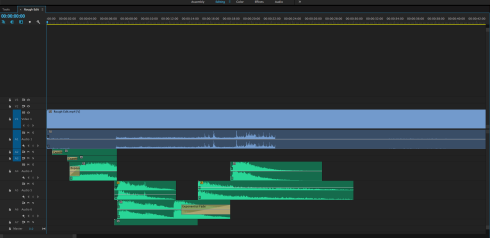
Here’s the full timeline of the final cut of the project.
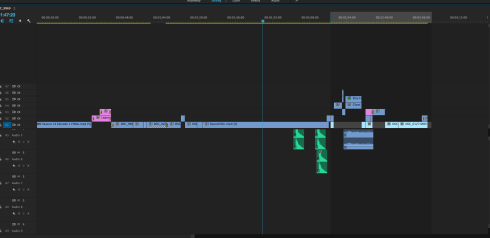
And so after all that, the video gets one last check by the producers to ensure quality. That’s the time they recommend changes and fixes, and for our video our audio was a bit too loud. I went back and fine tuned the audio and the music a bit more and then that was it!
That’s how I made a video about Shia Leboeuf which couldn’t have happened without help from my two partners Charlie Troung and Chris Van Lieshout. I hope I gave you a good insight into how BBN works and how all of our videos are produced, edited, and finally published.
If you liked seeing Behind the BBN, please follow this blog for more content and many more things to come!

